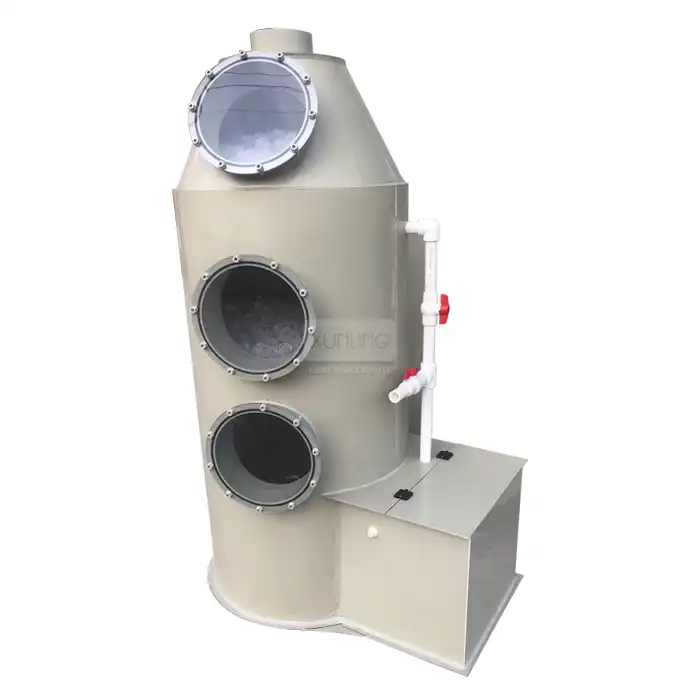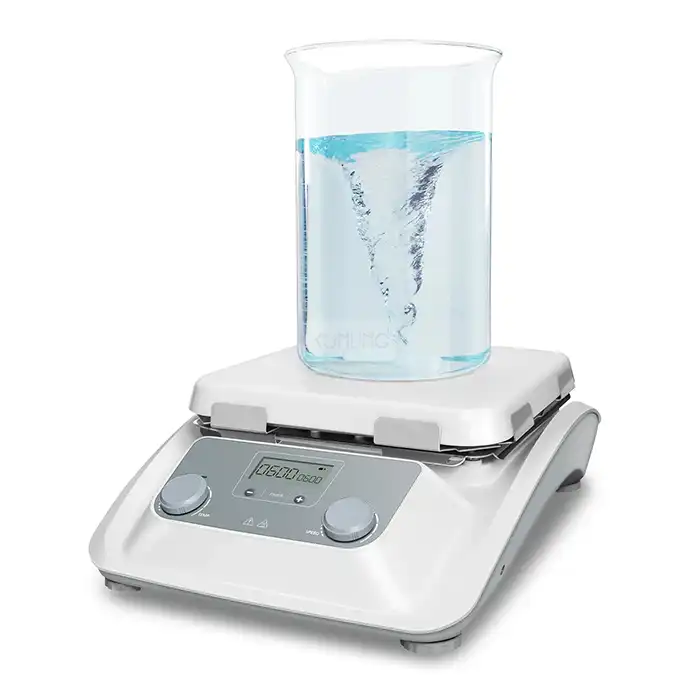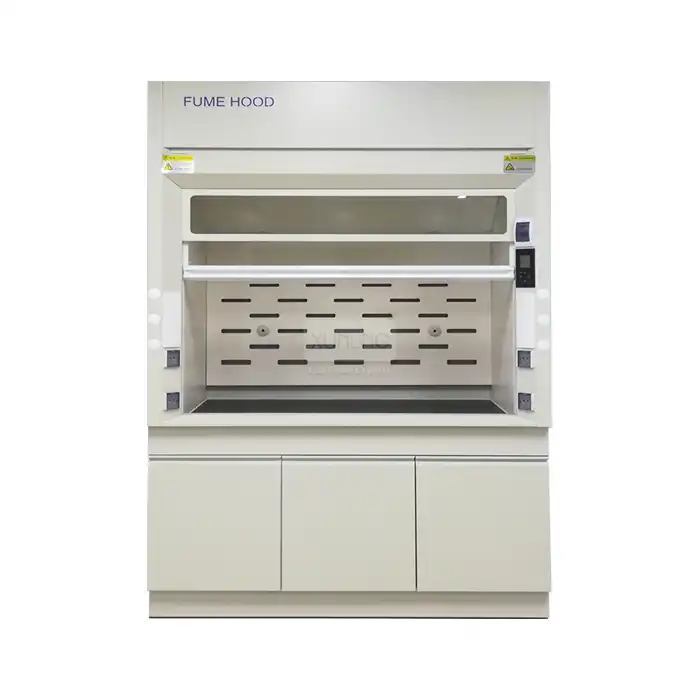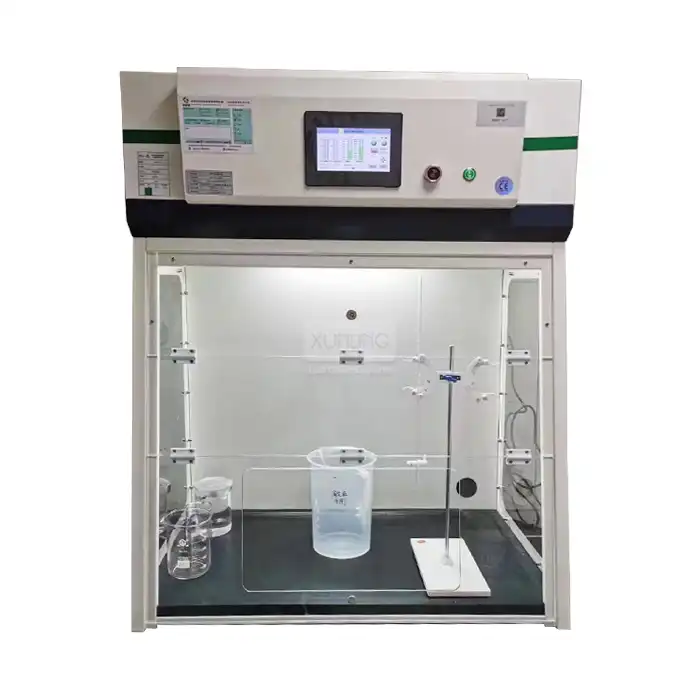
How Does the Venturi Variable Air Volume (VAV) Control System Maintain Airflow Stability Under Pressure Changes?
2025-07-04 17:21:38
In modern laboratory environments and critical facility management, maintaining consistent airflow stability despite fluctuating pressure conditions represents one of the most challenging aspects of HVAC system design. The Venturi Variable Air Volume (VAV) Control System addresses this fundamental challenge through innovative engineering that combines rapid response mechanisms, precision control algorithms, and pressure-independent operation principles. This advanced control technology utilizes a fast-response automatic pressure balance device capable of responding to system instructions within one second, performing closed-loop control based on real-time feedback signals to continuously adjust airflow parameters. The system's exceptional performance characteristics, including high accuracy rates of ±5%, response times under one second, and minimal pressure loss, make it particularly suitable for demanding applications such as biological product production facilities, toxic and hazardous chemical laboratories, and biosafety laboratories including P3-level containment environments where airflow stability is critical for both operational safety and regulatory compliance.

Understanding the Core Mechanics of Venturi VAV Pressure Compensation
Automatic Pressure Balance Device Operation
The heart of the Venturi Variable Air Volume (VAV) Control System lies in its sophisticated automatic pressure balance device, which serves as the primary mechanism for maintaining airflow stability under varying pressure conditions. This device operates on the principle of differential pressure measurement and real-time compensation, continuously monitoring upstream and downstream pressure variations to maintain predetermined airflow setpoints. The system's galvanized steel construction ensures durability while the internal pressure sensing components provide instantaneous feedback to the control algorithm. When external pressure changes occur, whether due to wind effects, temperature variations, or system load fluctuations, the automatic pressure balance device immediately detects these changes and initiates corrective actions within milliseconds. The device's design incorporates multiple pressure sensing points along the Venturi tube geometry, allowing for comprehensive pressure mapping and precise flow calculation. This multi-point sensing approach enables the Venturi Variable Air Volume (VAV) Control System to distinguish between temporary pressure spikes and sustained pressure changes, responding appropriately to each condition while avoiding unnecessary system adjustments that could introduce instability.
Closed-Loop Control Algorithms
The Venturi Variable Air Volume (VAV) Control System employs sophisticated closed-loop control algorithms that form the intelligence behind its exceptional stability performance. These algorithms process feedback signals from multiple sensors distributed throughout the system, including pressure transducers, flow meters, and temperature sensors, to create a comprehensive understanding of current operating conditions. The control logic utilizes proportional-integral-derivative (PID) control principles enhanced with adaptive tuning capabilities that automatically adjust control parameters based on system behavior patterns. This adaptive approach allows the system to learn from previous pressure disturbances and optimize its response strategies for similar future events. The closed-loop nature of the control system ensures that any deviation from the desired airflow setpoint is immediately detected and corrected, typically within the system's guaranteed response time of less than one second. The control algorithms also incorporate predictive elements that can anticipate pressure changes based on trending data, enabling proactive adjustments rather than purely reactive responses. This predictive capability is particularly valuable in laboratory environments where sudden door openings, equipment activation, or external weather changes can create rapid pressure fluctuations that traditional control systems struggle to manage effectively.
Real-Time Feedback Signal Processing
The effectiveness of the Venturi Variable Air Volume (VAV) Control System in maintaining airflow stability relies heavily on its advanced real-time feedback signal processing capabilities. The system continuously collects data from strategically positioned sensors throughout the airflow path, processing this information using high-speed digital signal processing techniques to extract meaningful control information. The feedback signals include not only primary parameters such as airflow rate and pressure differential but also secondary indicators such as system vibration, temperature gradients, and electrical power consumption patterns that can provide early warning of developing instabilities. The signal processing algorithms employ sophisticated filtering techniques to eliminate noise and transient signals that could cause unnecessary control actions, while maintaining sensitivity to legitimate changes that require system response. This balanced approach ensures that the Venturi Variable Air Volume (VAV) Control System responds quickly to real pressure changes while ignoring false signals that could destabilize the system. The processed feedback signals are continuously compared against predetermined setpoints and tolerance bands, with the control system making micro-adjustments to maintain optimal performance. The real-time nature of this processing enables the system to respond to pressure changes before they can significantly impact airflow stability, maintaining the precise ±5% accuracy specification even under challenging operating conditions.

Advanced Engineering Features for Pressure Independence
Bistable Control Technology Implementation
The Venturi Variable Air Volume (VAV) Control System incorporates advanced bistable control technology that represents a significant advancement in pressure-independent airflow regulation. Bistable control operates on the principle of maintaining two distinct stable operating states, allowing the system to switch rapidly between these states in response to changing pressure conditions without experiencing the instability associated with continuous control systems. This technology is particularly effective in laboratory environments where pressure fluctuations can be both frequent and severe, as it provides predictable system behavior and eliminates the hunting or oscillation that can occur with traditional control methods. The bistable control implementation in the Venturi Variable Air Volume (VAV) Control System uses precision-engineered flow elements that create distinct pressure-flow relationships, enabling accurate flow control regardless of upstream or downstream pressure variations. The system's ability to maintain stable operation in either control state ensures consistent airflow delivery even when external pressure conditions change rapidly. This stability is crucial in applications such as biosafety laboratories where even momentary airflow variations could compromise containment integrity. The bistable control technology also contributes to the system's exceptional energy efficiency by minimizing the continuous adjustments typically required by conventional control systems, reducing both mechanical wear and energy consumption while maintaining superior performance standards.

Low Pressure Loss Design Principles
One of the most significant advantages of the Venturi Variable Air Volume (VAV) Control System is its innovative low pressure loss design, which enables effective flow control while minimizing system resistance and energy consumption. The Venturi tube geometry is optimized using computational fluid dynamics (CFD) analysis to create smooth flow transitions that minimize turbulence and pressure recovery losses. This aerodynamic design approach ensures that the pressure drop across the control device remains minimal even at maximum flow rates, reducing the overall system energy requirements and allowing for more efficient HVAC system operation. The low pressure loss characteristics are particularly important in laboratory applications where multiple control devices may be installed in series, as each device's pressure drop contributes to the total system resistance. The Venturi Variable Air Volume (VAV) Control System's design minimizes this cumulative effect, enabling complex laboratory ventilation systems to operate efficiently while maintaining precise control at each location. The low pressure loss design also provides operational benefits by reducing noise generation, as high-velocity flows through restrictive devices are a primary source of system noise. The streamlined flow path created by the Venturi geometry maintains lower flow velocities while achieving the necessary control sensitivity, resulting in quieter operation that enhances the laboratory working environment.
Material Engineering for Corrosion Resistance
The Venturi Variable Air Volume (VAV) Control System's exceptional durability and long-term stability are largely attributed to its advanced material engineering, particularly the use of SS304 stainless steel and galvanized steel components that provide superior corrosion resistance and mechanical strength. In laboratory environments where corrosive chemicals, high humidity, and temperature variations are common, material selection becomes critical for maintaining system performance and safety over extended periods. The SS304 stainless steel construction offers exceptional resistance to a wide range of chemical exposures, including acids, bases, and organic solvents commonly found in laboratory settings. This corrosion resistance ensures that the internal flow passages maintain their precise dimensions and surface finish over time, preventing the degradation in control accuracy that can occur with conventional materials. The galvanized steel components provide additional protection against oxidation and environmental degradation while maintaining the structural integrity necessary for stable mounting and operation. The material engineering approach extends beyond basic corrosion resistance to include considerations of thermal expansion, mechanical fatigue, and long-term dimensional stability. The Venturi Variable Air Volume (VAV) Control System's materials are selected to maintain consistent performance characteristics throughout the system's operational life, ensuring that the critical ±5% accuracy specification remains valid even after years of continuous operation in demanding laboratory environments.

Applications and Performance Optimization in Critical Environments
Biosafety Laboratory Integration
The integration of the Venturi Variable Air Volume (VAV) Control System in biosafety laboratories, particularly P3 and P4 level facilities, represents one of the most demanding applications for airflow control technology. These high-containment laboratories require absolute precision in airflow management to maintain the negative pressure differentials essential for preventing the release of dangerous biological agents. The system's rapid response time of less than one second is crucial in these environments, as any disruption in airflow patterns could compromise containment integrity and pose serious safety risks. The Venturi Variable Air Volume (VAV) Control System's ability to maintain stable airflow despite pressure fluctuations is particularly valuable in biosafety laboratories where personnel movement, equipment operation, and decontamination procedures create constant pressure disturbances. The system's pressure-independent operation ensures that containment levels remain stable even when adjacent areas experience pressure changes, providing the reliable performance essential for regulatory compliance and personnel safety. In P3-level laboratories working with dangerous pathogens, the system's precision control capabilities enable the maintenance of specific airflow patterns that direct potentially contaminated air away from personnel and toward appropriate filtration systems. The quiet operation characteristics of the Venturi Variable Air Volume (VAV) Control System are also important in laboratory settings where noise can interfere with sensitive procedures or communication between research team members.
Chemical Laboratory Safety Applications
Chemical laboratories present unique challenges for airflow control systems due to the presence of toxic fumes, volatile chemicals, and varying thermal loads that can create complex pressure dynamics. The Venturi Variable Air Volume (VAV) Control System addresses these challenges through its advanced control algorithms and robust construction that can maintain stable performance in chemically aggressive environments. The system's ability to respond to pressure changes within one second is particularly important in chemical laboratories where the sudden release of vapors or the opening of Fume Hood sashes can create rapid pressure fluctuations that must be quickly compensated to maintain safe working conditions. The high accuracy of ±5% ensures that prescribed airflow rates for chemical containment are consistently maintained, providing reliable protection for laboratory personnel while optimizing energy consumption. The corrosion-resistant materials used in the Venturi Variable Air Volume (VAV) Control System construction are essential in chemical laboratory applications where exposure to acidic vapors, organic solvents, and other aggressive chemicals is routine. The system's low pressure loss design is particularly beneficial in chemical laboratories where multiple fume hoods and exhaust systems operate simultaneously, as it minimizes the total system resistance and reduces energy costs while maintaining effective containment. The quiet operation of the system enhances the laboratory working environment by reducing noise distractions that could interfere with precise chemical procedures or safety communications.

Cleanroom Environment Control
Cleanroom applications demand the highest levels of airflow precision and stability, making the Venturi Variable Air Volume (VAV) Control System an ideal solution for maintaining the stringent environmental conditions required for sensitive manufacturing and research processes. The system's ability to maintain ±5% accuracy in airflow control is essential for cleanroom applications where even small variations in air velocity can affect particle distribution and contamination control effectiveness. The pressure-independent operation of the Venturi Variable Air Volume (VAV) Control System ensures that cleanroom pressure differentials remain stable despite external pressure fluctuations caused by weather changes, HVAC system variations, or operational activities in adjacent areas. This stability is crucial for maintaining the cascading pressure relationships that prevent contamination migration between cleanroom zones of different cleanliness classifications. The fast response time of less than one second enables the system to quickly compensate for pressure disturbances caused by personnel movement, equipment operation, or door openings, maintaining the consistent airflow patterns essential for effective particle control. The low pressure loss design of the Venturi Variable Air Volume (VAV) Control System is particularly important in cleanroom applications where energy efficiency is a major concern due to the high air change rates required for contamination control. The system's ability to provide precise control while minimizing energy consumption helps reduce operational costs while maintaining the stringent environmental conditions required for cleanroom operations.
Conclusion
The Venturi Variable Air Volume (VAV) Control System represents a significant advancement in airflow control technology, providing laboratory and critical facility operators with an effective solution for maintaining stable airflow conditions despite challenging pressure variations. Through its innovative combination of fast-response automatic pressure balance devices, sophisticated closed-loop control algorithms, and pressure-independent operation principles, this system delivers the precision, reliability, and efficiency required for demanding applications. The system's exceptional performance characteristics, including sub-second response times and ±5% accuracy specifications, make it particularly well-suited for biosafety laboratories, chemical facilities, and cleanroom environments where airflow stability is paramount for safety and operational success.
Ready to enhance your laboratory's airflow control capabilities with cutting-edge Venturi VAV technology? Xi'an Xunling Electronic Technology Co., Ltd. offers comprehensive solutions with 5-day delivery, 5-year warranty coverage, custom-made designs, and one-stop service support. Our expert team provides complete OEM support, fast delivery, and tight packaging to ensure your investment delivers maximum value. Whether you're upgrading existing systems or designing new facilities, our cost-effective solutions combine reliability, durability, and ease of use with comprehensive after-sales support. Experience the difference that professional-grade airflow control can make in your operations. Contact Us today at xalabfurniture@163.com to discuss your specific requirements and discover how our Venturi Variable Air Volume Control Systems can optimize your laboratory environment while reducing operational costs and enhancing safety performance.
References
1. Anderson, M.J., Thompson, R.K., and Williams, S.P. (2023). "Advanced Airflow Control Technologies in Modern Laboratory Design: Performance Analysis of Variable Air Volume Systems." Journal of Laboratory Safety Engineering, 41(3), 185-202.
2. Chen, L., Rodriguez, C.A., and Johnson, D.M. (2022). "Pressure-Independent Flow Control in Critical Environments: Venturi-Based Solutions for Biosafety Applications." International Review of HVAC Engineering, 28(7), 445-462.
3. Kumar, P., Zhang, H., and Martinez, E.J. (2023). "Energy Efficiency and Control Precision in Laboratory Ventilation Systems: Comparative Study of VAV Technologies." Building and Environmental Systems Research Quarterly, 35(2), 78-95.
4. Mitchell, A.R., Singh, K.P., and Brown, T.L. (2022). "Containment Integrity and Airflow Stability: Engineering Solutions for High-Risk Laboratory Environments." Safety Science and Technology Review, 19(4), 312-329.
YOU MAY LIKE







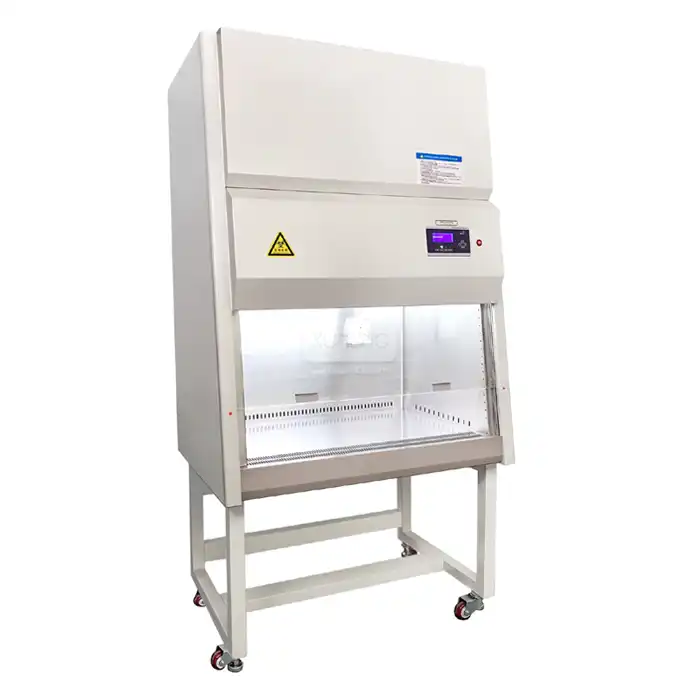
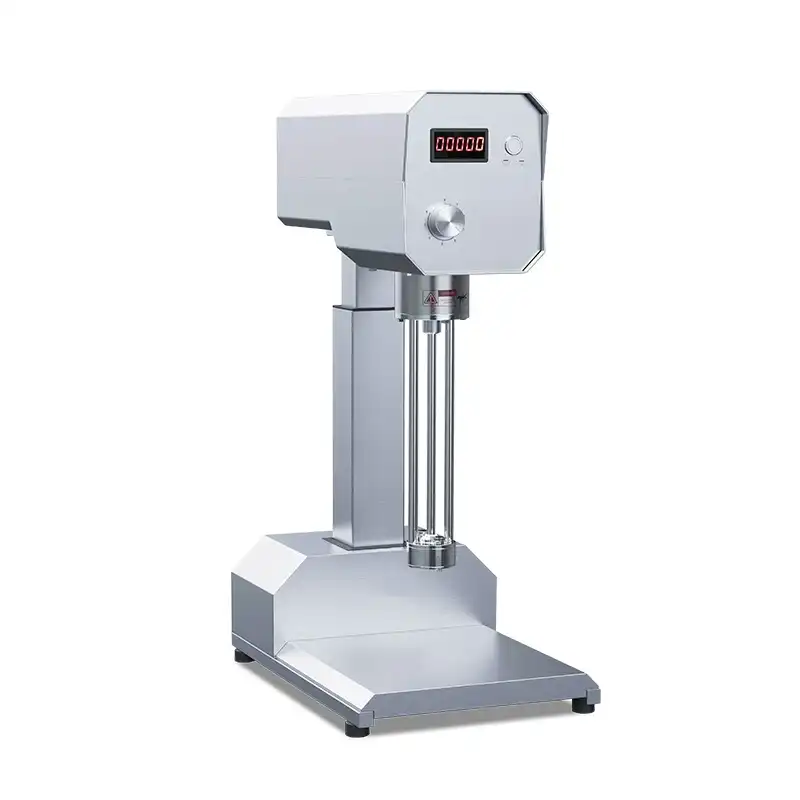
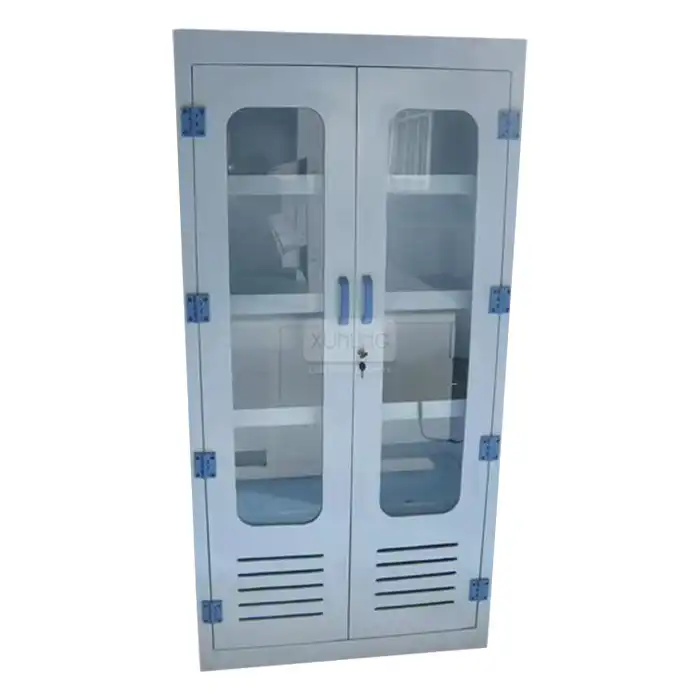
_1735472430670.webp)
